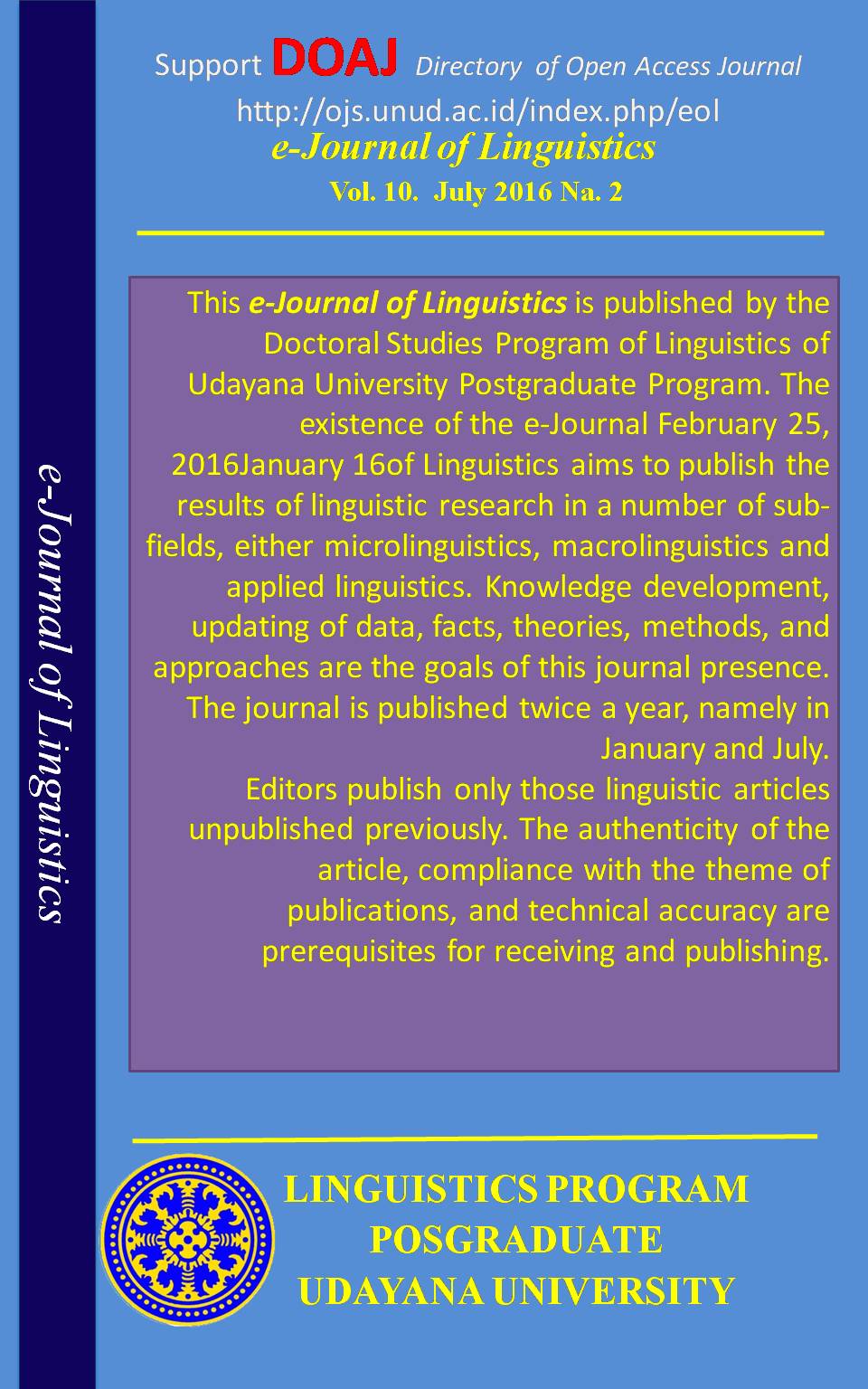THE LINGUISTIC STATUS OF ISOLECTS IN NAGEKEO REGENCY: A DIALECT GEOGRAPHY ANALYSIS
Abstract
This study aims to investigate (1) the forms of isolect differences based on lexical paradigm in various research locations in Nagekeo regency, (2) the grouping of these isolects in Nagekeo regency into dialects and sub dialects, and (3) the forms of phonemic changes phonologically of isolects in Nagekeo regency.
This research was descriptive analysis research. The data were collected through dialect metric method and comprised from three parts dialectology of Nagekeo language.
1. Mbay language/Riung. It consists of three dialects: a). Lengkosambi Dialect, b). Nggolonio Dialect, and c). Nggolombay Dialect.
2. Nagekeo Language. It covers 22 dialects, 5 sub-dialects, and 3 contrast in speech, as bellow:
1) The midle Nage has one dialect and three sub-dialects, namely Boawae dialect, Rawe sub-dialect, Rowa sub-dialect, and Kelewae sub-dialect.
2) The north-midle Nage has 6 dialects: Munde dialect, Dhawe dialect, Lape dialect, Lambo dialect, Dhereisa dialect, and Rendu dialect.
3) The south–midle has 4 dialects and one contrast in speech such as Ndora dialect, Jaduro dialect (Raja,Wudu, Wolowea, Gero), Kelimado dialect, Kotakeo dialect and Ladolima contrast in speech.
4) The north-east consists of two dialects and one contrast in speech, that is Wolowae dialect or Toto dialect with Utetoto sub-dialect, Oja dialect with Watumite sub-dialect and Tendarea sub-dialect.
5) The boundary region that is located between Nageko and Ngada district has two dialects including Sara dialect-Taka (Sarasedu,Takatunga); Soa dialect (Mengeruda)-Poma (Denatana)
6) West Keo has three dialects and one sub dialect that is Lejo dialect with Wolokisa subdialect; Aewoe dialect; and Kotagana dialect.
7) The midle Keo has two dialects and one subdialect, namely Kotowuji dialect with Mbaenuamuri sub-dialect; Romba dialect
8) The east Keo has one dialect and one contrast in speech like Riti dialect-Woko (Riti-Wokodekororo) with contrast in speech to Riti dialect. It is found that six consonants occur in regular variety as distinctive features of dialect from phonological point of view. They are 1) consonant variations occuring on phonem /b/ ? /bh, mb, 2). Consonant variations on /d/ ? /dh, nd/, 3). Consonant variations on /d/ ? /dh, nd/, 4). Alveolar variation consonant /z/ ? /r, R, y, 1y/ , 5). Various trill consonants /r/ ? /R, l, lh, y, Ø/. and 6). Various lateral consonants /l/ ? / 1d, 1h, d, dh, ø/.
3 Ende Language. It consists of two dialects; Maukaro dialect and Nangapanda dialect.Downloads
Keywords

This work is licensed under a Creative Commons Attribution 4.0 International License











